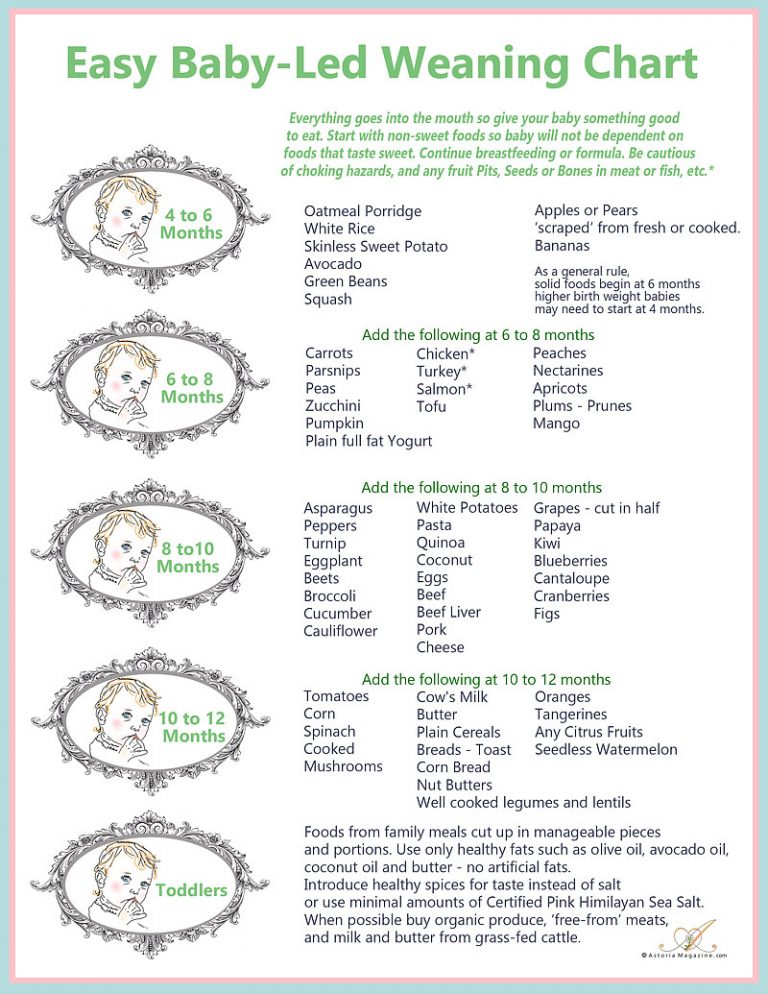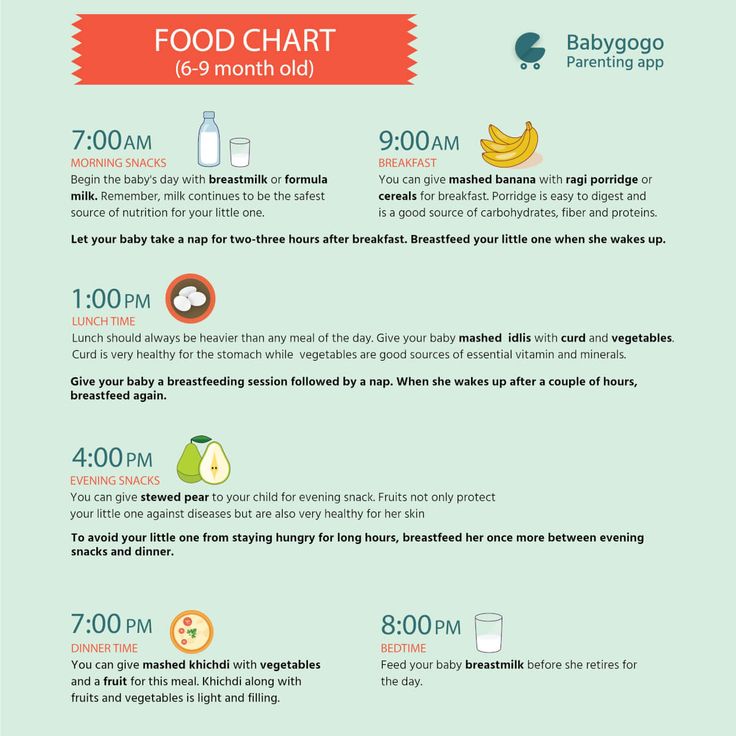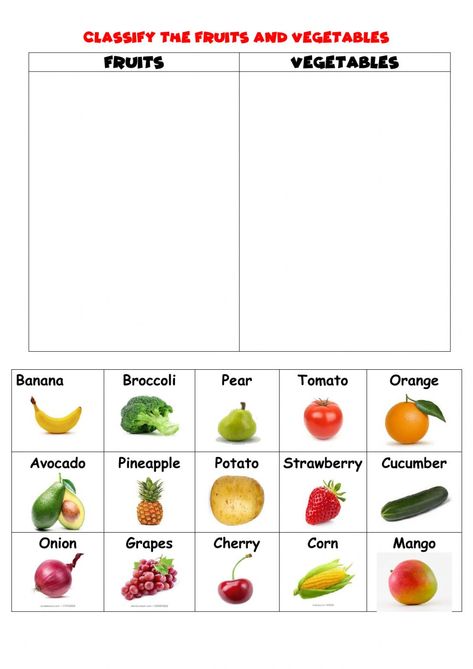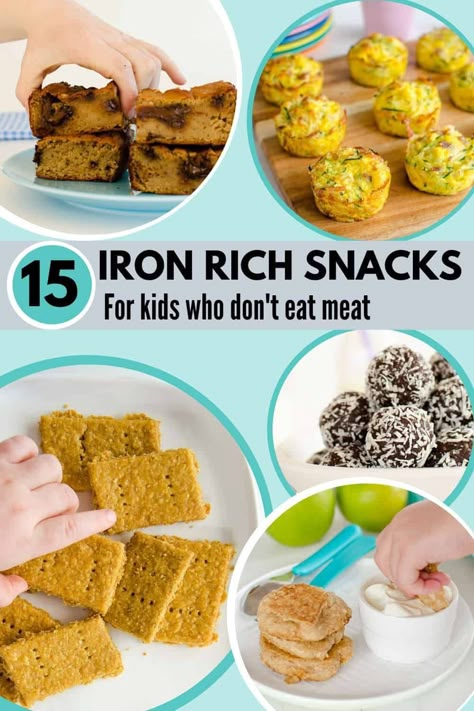Feeding mom baby
11 Benefits of Breastfeeding for Both Mom and Baby
If you’ve been considering not breastfeeding your new baby, you’re probably inundated with information. It’s a personal decision only you can make, but the benefits are seemingly endless.
Before you decide (or if you just need reassurance that breast milk is the right choice for you), let’s go through all the benefits to both you and baby.
Breast milk provides optimal nutrition for babies. It has the right amount of nutrients, is easily digested, and is readily available.
The American Academy of Pediatrics (AAP) recommends exclusive breastfeeding for 6 months, and continuing even after solid foods are introduced, until at least age 1 year or until both mom and baby agree to call it quits.
The World Health Organization (WHO) recommends breastfeeding until 2 years old or longer because the benefits continue that long. These agencies recommend starting as early as one hour after birth for the biggest benefits.
These recommendations don’t come lightly, and you’ll see why.
Here are 11 science-based benefits of breastfeeding that are amazing for you and for your little one.
1. Breast milk provides ideal nutrition for babies
Most healthcare professionals recommend exclusive breastfeeding for at least 6 months or much longer.
Breast milk contains everything baby needs for the first 6 months of life, in all the right proportions. Its composition even changes according to the baby’s changing needs, especially during the first month of life.
During the first days after birth, your breasts produce a thick and yellowish fluid called colostrum. It’s high in protein, low in sugar, and loaded with beneficial compounds. It’s truly a wonder food and not replaceable by formula.
Colostrum is the ideal first milk and helps the newborn’s immature digestive tract develop. After the first few days, the breasts start producing larger amounts of milk as the baby’s stomach grows.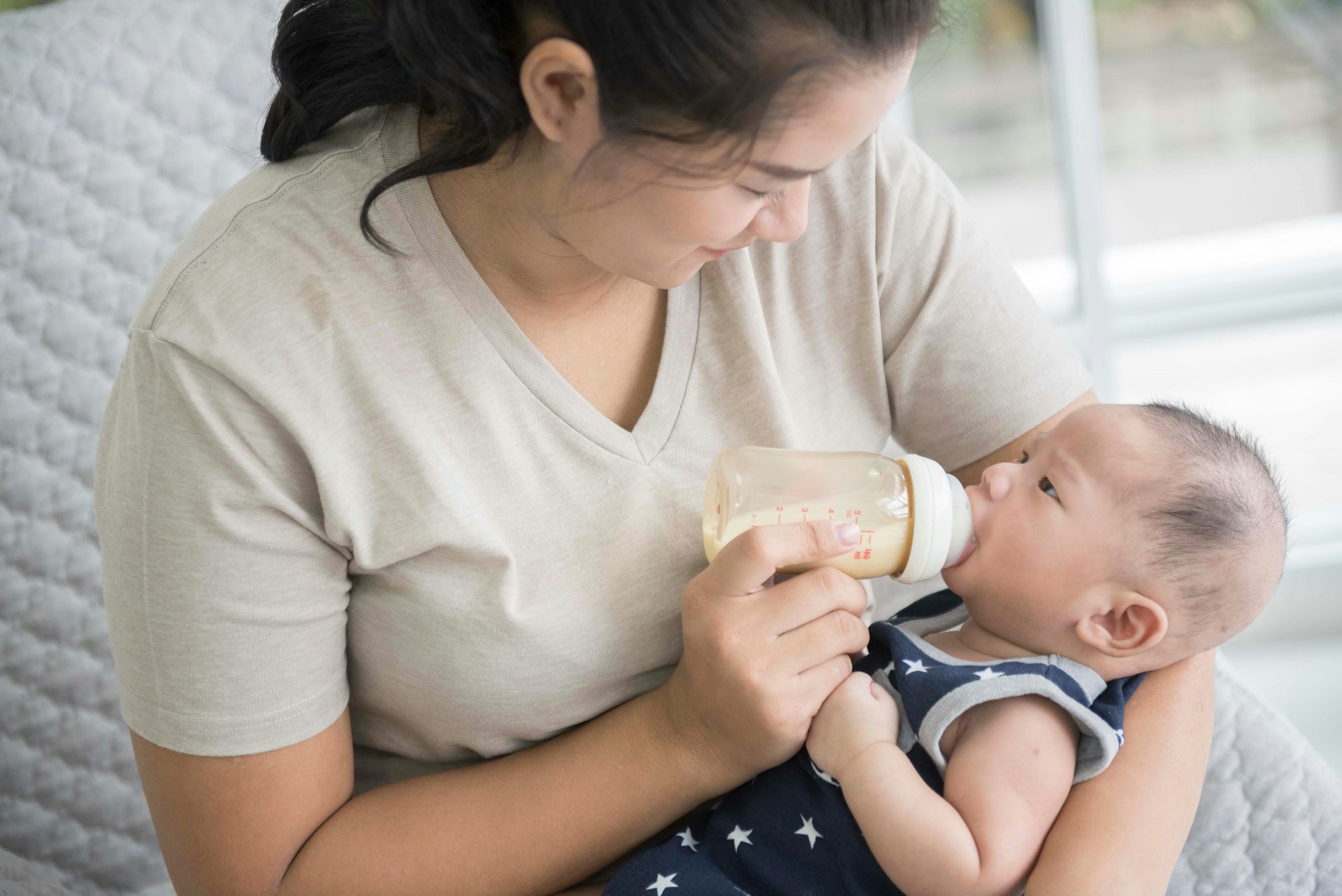
About the only thing that may be lacking from your magical milk supply is vitamin D.
Unless you have a very high intake (and most of us don’t), your breast milk won’t provide enough. Vitamin D drops are usually recommended.
2. Breast milk contains important antibodies
Breast milk is loaded with antibodies that help your baby fight off viruses and bacteria, which is critical in those tender, early months.
This particularly applies to colostrum, the first milk. Colostrum provides high amounts of immunoglobulin A (IgA), as well as several other antibodies.
When you’re exposed to viruses or bacteria, you start producing antibodies that then go into the milk. It’s immunity, baby!
IgA protects the baby from getting sick by forming a protective layer in the baby’s nose, throat, and digestive system.
Formula doesn’t provide antibody protection for babies. Numerous studies show that babies who are not breastfed are more vulnerable to health issues like pneumonia, diarrhea, and infection.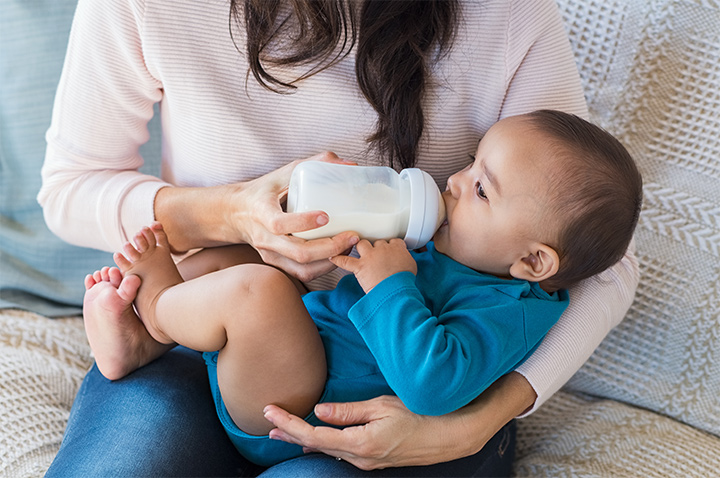
3. Breastfeeding may reduce disease risk
Exclusive breastfeeding, meaning that the infant receives only breast milk, is particularly beneficial.
It may reduce your baby’s risk for many illnesses and diseases, including:
- Middle ear infections. Breastfeeding, particularly exclusively and as long as possible, may protect against middle ear, throat, and sinus infections well beyond infancy.
- Respiratory tract infections. Breastfeeding can protect against multiple respiratory and gastrointestinal acute illnesses.
- Colds and infections. Babies exclusively breastfed for 6 months may have a lower risk of getting serious colds and ear or throat infections.
- Gut infections. Breastfeeding is linked with a reduction in gut infections.
- Intestinal tissue damage. Feeding preterm babies breast milk is linked with a reduction in the incidence of necrotizing enterocolitis.

- Sudden infant death syndrome (SIDS). Breastfeeding is linked to a reduced risk of SIDS, especially when breastfeeding exclusively.
- Allergic diseases. Breastfeeding is linked to a reduced risk of asthma, atopic dermatitis, and eczema.
- Bowel diseases. Babies who are breastfed may be less likely to develop Crohn’s disease and ulcerative colitis.
- Diabetes. Breastfeeding is linked to a reduced risk of developing type 1 diabetes and non-insulin-dependent (type 2) diabetes.
- Childhood leukemia. Breastfeeding is linked to a reduction in the risk for childhood leukemia.
4. Breast milk promotes baby’s healthy weight
Breastfeeding promotes healthy weight gain and helps prevent childhood obesity.
One study showed that breastfeeding for longer than 4 months had a significant reduction in the chances of a baby developing overweight and obesity.
This may be due to the development of different gut bacteria.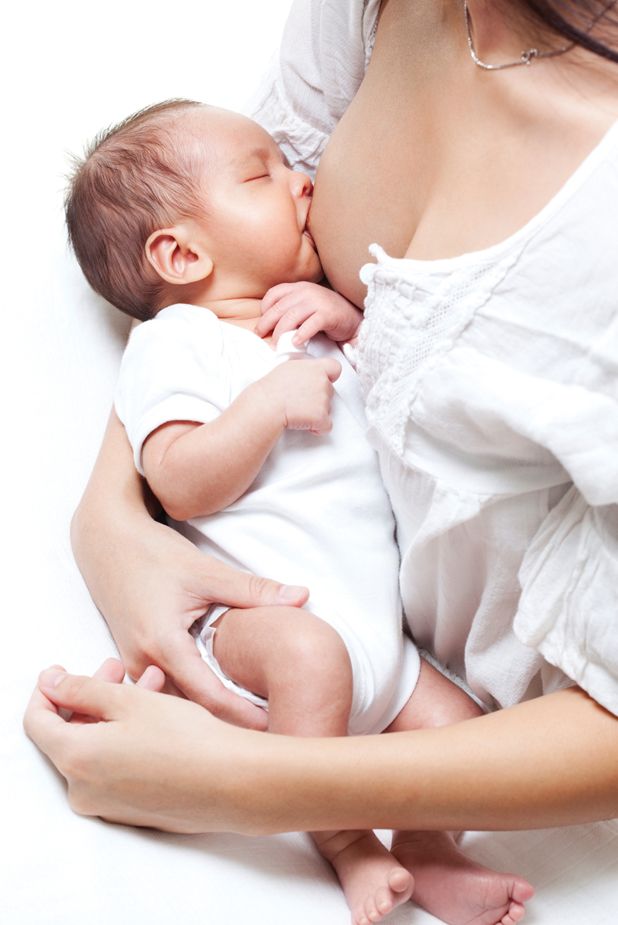 Breastfed babies have higher amounts of beneficial gut bacteria, which may affect fat storage.
Breastfed babies have higher amounts of beneficial gut bacteria, which may affect fat storage.
Babies fed breast milk also have more leptin in their systems than formula-fed babies. Leptin is a key hormone for regulating appetite and fat storage.
Breastfed babies also self-regulate their milk intake. They’re better at eating only until they’ve satisfied their hunger, which helps them develop healthy eating patterns.
5. Breastfeeding may make children smarter
Breastfeeding may help baby ace those tests. Some studies suggest there may be a difference in brain development between breastfed and formula-fed babies.
This difference may be due to the physical intimacy, touch, and eye contact associated with breastfeeding as well as nutrient content.
Studies indicate that breastfed babies have higher intelligence scores and are less likely to develop behavioral problems have learning difficulties as they grow older.
However, the most pronounced effects are seen in preterm babies, who have a higher risk for developmental issues.
The research clearly shows that breastfeeding has significant positive effects on babies’ long-term brain development.
6. Breastfeeding may help you lose weight
You may have heard this one often. While some women seem to gain weight during breastfeeding, others seem to effortlessly lose weight.
Breastfeeding does burn more calories, and after 3 months of lactation, you’ll likely experience an increase in fat burning compared to non-lactating mothers. Though the difference isn’t significant.
7. Breastfeeding helps the uterus contract
During pregnancy, your uterus grows immensely, expanding from the size of a pear to filling almost the entire space of your abdomen.
After delivery, your uterus goes through a process called involution, which helps it return to its previous size. Oxytocin, a hormone that increases throughout pregnancy, helps drive this process.
Your body secretes high amounts of oxytocin during labor to help deliver the baby and reduce bleeding. It can also help you bond with your new little one.
It can also help you bond with your new little one.
Oxytocin also increases during breastfeeding. It encourages uterine contractions and reduces bleeding, helping the uterus return to its previous size.
Studies have also shown that mothers who breastfeed generally have less blood loss after delivery and faster involution of the uterus.
8. Mothers who breastfeed have a lower risk for depression
Postpartum depression (PPD) is a type of depression that can develop shortly after childbirth.
Women who breastfeed seem less likely to develop postpartum depression, compared to mothers who wean early or do not breastfeed, according to a 2012 study.
However, those who experience postpartum depression early after delivery are also more likely to have trouble breastfeeding and do so for a shorter duration.
If you have any symptoms of PPD, tell your doctor as soon as possible.
9. Breastfeeding reduces your disease risk
Breastfeeding seems to provide you with long-term protection against cancer and several diseases.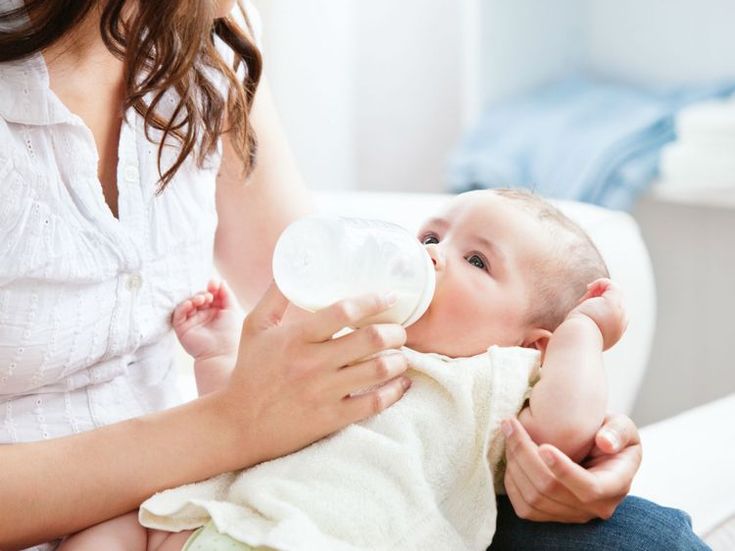
The total time a woman spends breastfeeding is linked with a reduced risk for breast and ovarian cancer.
Women who breastfeed have a lower risk for:
- high blood pressure
- arthritis
- high blood fats
- heart disease
- type 2 diabetes
10. Breastfeeding may prevent menstruation
Continued breastfeeding also pauses ovulation and menstruation. The suspension of menstrual cycles may actually be nature’s way of ensuring there’s some time between pregnancies.
You may consider this change as an extra benefit. While you’re enjoying precious time with your newborn, it’s just one less thing to worry about.
11. It saves time and money
To top the list, breastfeeding is mostly free, barring expenses for any lactation consulting and breast pumps. By choosing to breastfeed, you won’t have to:
- spend money on formula
- calculate how much your baby needs to drink daily
- spend time cleaning and sterilizing bottles
- mix and warm up bottles in the middle of the night (or day)
- figure out ways to warm up bottles while on the go
Breast milk is always at the right temperature and ready to drink.
The benefits of breastfeeding are so numerous that most health agencies recommend it for everyone for as long as possible, barring medical problems that prevent it.
Breast milk contains antibodies and other elements that protect your baby from illness and chronic disease. It’s the best start you can give, if you’re able.
Plus, we can’t discount the big benefits to you, for health reasons and convenience.
No matter what choice you make, your healthcare team can guide you to the right methods and choices. You’ve got this.
Why Breastfeed: Benefits for You & Your Baby
Getting ready for the birth of your baby is an exciting and busy time. One of the most important decisions you will make is how to feed your baby. What matters most is having the information, options and support you need to choose what truly works for you and your family.
Breastfeeding: a natural gift
Breastfeeding provides a lot of perks for babies and nursing parents. That’s why the American Academy of Pediatrics recommends exclusive breastfeeding for a newborn’s first six months, and continued breastfeeding as long as parent and baby like after introducing solid foods. But every family’s situation is different. Not everyone can breastfeed or continue breastfeeding for as long they’d like for various reasons. You may choose to breastfeed for a shorter time or combine breastfeeding with baby formula. Others may nurse their little ones for two years or more.
That’s why the American Academy of Pediatrics recommends exclusive breastfeeding for a newborn’s first six months, and continued breastfeeding as long as parent and baby like after introducing solid foods. But every family’s situation is different. Not everyone can breastfeed or continue breastfeeding for as long they’d like for various reasons. You may choose to breastfeed for a shorter time or combine breastfeeding with baby formula. Others may nurse their little ones for two years or more.
It's not an all-or-nothing choice
Giving your child at least some breast milk delivers real benefits. And even though exclusive breastfeeding is best in the beginning, this is not an all-or-nothing choice. In general, the longer you breastfeed, the greater the benefits will be to you and your baby, and the longer these benefits will last.
Why is breastfeeding so good for my baby?
Here are some of the reasons breastfeeding is good for babies:
Human milk is a superfood for babies
Human milk provides all the nutrients, calories, and fluids needed for your baby health.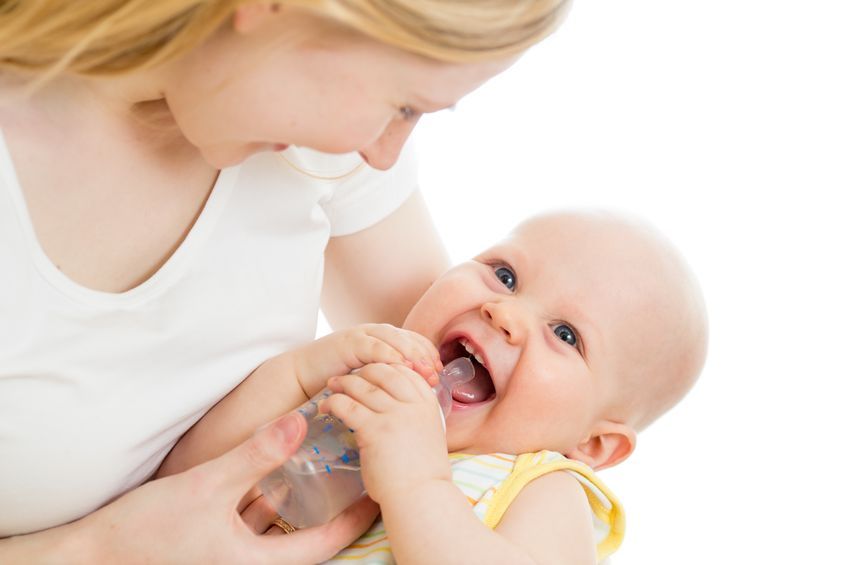 It supports your baby’s brain development and growth and is easiest for your little one to digest. Breastfeeding continues to deliver the healthy antibodies your infant naturally received in the womb. This boosts your baby’s immunity to everything from the common cold to more serious conditions. In fact, research shows that breastfeeding offers protection from asthma, eczema, diabetes, obesity, leukemia, tooth decay, ear infections, persistent diarrhea and much more. Studies also show that breastfeeding reduces your child’s risks for Sudden Infant Death Syndrome (SIDS) as well as other causes of infant death, and even is linked to higher IQ.
It supports your baby’s brain development and growth and is easiest for your little one to digest. Breastfeeding continues to deliver the healthy antibodies your infant naturally received in the womb. This boosts your baby’s immunity to everything from the common cold to more serious conditions. In fact, research shows that breastfeeding offers protection from asthma, eczema, diabetes, obesity, leukemia, tooth decay, ear infections, persistent diarrhea and much more. Studies also show that breastfeeding reduces your child’s risks for Sudden Infant Death Syndrome (SIDS) as well as other causes of infant death, and even is linked to higher IQ.
After giving your baby only breast milk for the first six months, nursing can continue as long as you and your baby wish. Nutritious solid foods, those with iron and zinc, should be introduced around six months. The only other thing you will need to give your baby is vitamin D drops, beginning soon after birth.
Breastfeeding boosts parent-child bonding
Feeding your baby will always provide snuggle time. But the physical, skin-to-skin contact of nursing helps create a special bond between you and your baby. Your baby will be comforted by the scent of your skin, the sound of your heartbeat and even the flavor of your milk. Breast milk has a naturally sweet taste, but also changes flavors depending on what you eat. No two meals are the same for your baby. This can have the added bonus of making them more likely to enjoy new foods you offer once they start eating solids.
But the physical, skin-to-skin contact of nursing helps create a special bond between you and your baby. Your baby will be comforted by the scent of your skin, the sound of your heartbeat and even the flavor of your milk. Breast milk has a naturally sweet taste, but also changes flavors depending on what you eat. No two meals are the same for your baby. This can have the added bonus of making them more likely to enjoy new foods you offer once they start eating solids.
Why is breastfeeding good for me?
Here are some of the ways breastfeeding benefits parents:
Breastfeeding benefits the nursing parent's health
If you’re the parent producing milk, your own health will benefit. It can help you recover from childbirth more quickly and easily. Hormones released during breastfeeding help the uterus to its regular size more quickly and can reduce postpartum bleeding.
Likely because of hormonal changes, breastfeeding protects you against diabetes, high blood pressure and cancers of the breast and ovaries.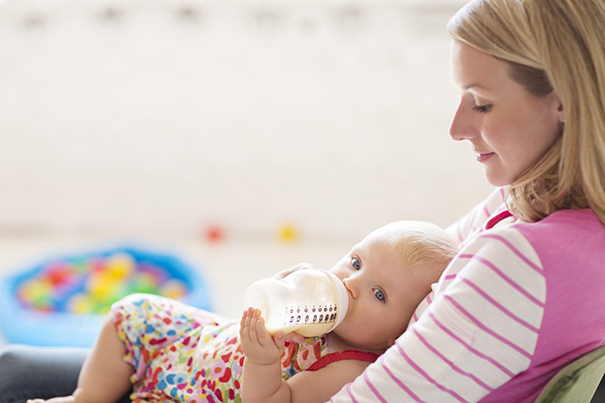 It may also help keep bones strong, which helps protect against bone fractures in older age. It also triggers the release of oxytocin, a hormone that has been linked with feelings of empathy, affection, calmness and positive communication—all of which can help you be the warm, attentive parent you want to be.
It may also help keep bones strong, which helps protect against bone fractures in older age. It also triggers the release of oxytocin, a hormone that has been linked with feelings of empathy, affection, calmness and positive communication—all of which can help you be the warm, attentive parent you want to be.
Breastfeeding can save money & prep time
Unlike formula, breast milk requires no purchase or preparation. Breastfeeding is also good for the environment, since there are no bottles to wash or formula cans to throw away. It’s wonderful, too, to be able to pick up the baby and go out—whether around town or on longer trips—without having to pack and carry a bag full of feeding equipment.
And while you may want to invest in a breast pump to make feeding more convenient, the cost of buying or renting a pump will likely be less than a year’s supply of formula. Plus, it is often reimbursed by insurance plans.
Breastfeeding supports contraception
Breastfeeding parents often find that their period does not return, especially during the first six months after birth. This can help keep iron in your body and may offer some natural contraceptive benefits. If you are giving your child only breast milk during this time, the baby is not yet six months, AND your period has not returned chances are good that you will not ovulate. (No ovulation, no pregnancy!) In fact, if you meet all three of these conditions, the level of contraceptive protection approaches 98%.
This can help keep iron in your body and may offer some natural contraceptive benefits. If you are giving your child only breast milk during this time, the baby is not yet six months, AND your period has not returned chances are good that you will not ovulate. (No ovulation, no pregnancy!) In fact, if you meet all three of these conditions, the level of contraceptive protection approaches 98%.
Overcoming challenges to breastfeeding
Finding expert support
For many nursing parents and babies, breastfeeding goes smoothly from the start. For others, it takes a little time and several attempts to get the process going effectively. Sore nipples, milk supply issues, not to mention the need to sit still for hours every day are very real issues. Talking with a midwife, lactation consultant, or doctor trained in breastfeeding right after birth can help. They can show you helpful techniques and breastfeeding positions that can help relieve nipple pain. Your pediatrician or OB-GYN can check your breasts during your postpartum visit and suggest ways to ease any discomfort you’re feeling.
Community & workplace support
There’s also the time and space it can take to breastfeed or pump your milk. It can be challenging to step away to do this, and there are some jobs that can make near impossible. This is one reason why support from partners, families, employers and communities is key. More and more employers are adopting breastfeeding-friendly policies, and laws in all 50 states protect parents’ right to breastfeed in public. By seeking the support that you need, including hands-on help at home and work, chances are good you may find the time and space to breastfeed successfully.
More information
- Breastfeeding: AAP Policy Explained
- Breastfeeding Benefits Your Baby's Immune System
- Why Breastfeeding Parents Need More Support
The information contained on this Web site should not be used as a substitute for the medical care and advice of your pediatrician.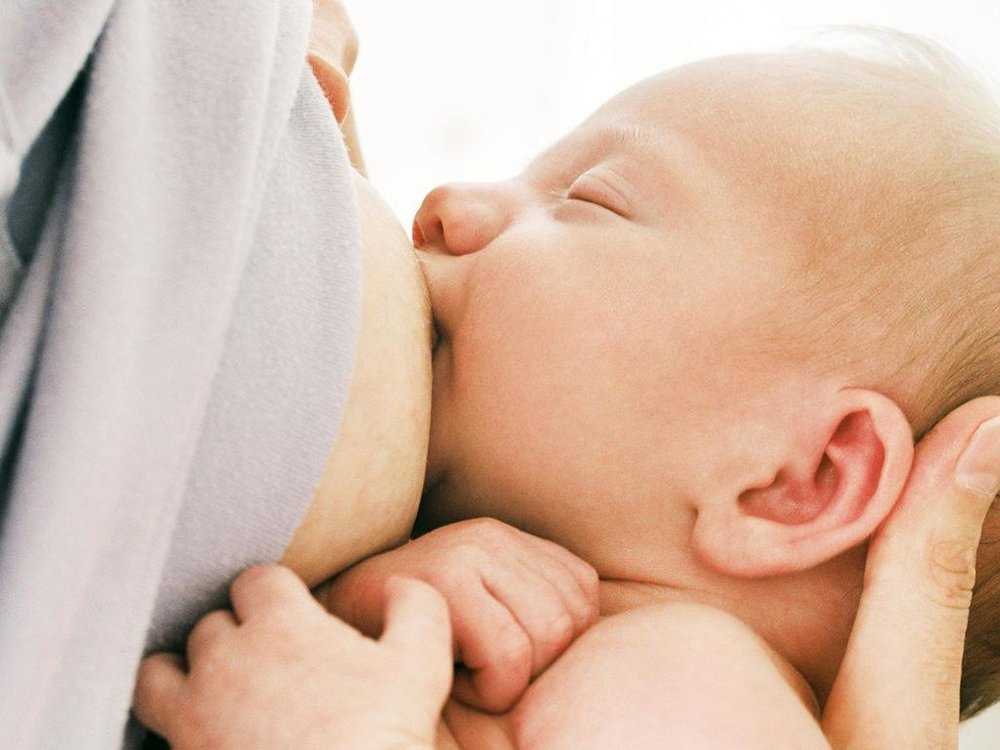 There may be variations in treatment that your pediatrician may recommend based on individual facts and circumstances.
There may be variations in treatment that your pediatrician may recommend based on individual facts and circumstances.
Breastfeeding Products | products for breastfeeding |
There are many baby care products, accessories and clothes on the market. But which ones are really necessary for breastfeeding? More on this in our helpful list.
Share this information
If you are planning to breastfeed, the right kit will make it so much easier. However, it is not so easy to understand which accessories are really needed for this, and which ones can be dispensed with. To help you, we have divided the whole breastfeeding period into several stages, as your needs are likely to change over time. In addition, we asked breastfeeding moms for tips and tricks on the most useful nursing accessories.
Breastfeeding supplies for the early days
The first few days after your baby is born can be stressful, so it's best to prepare ahead of time.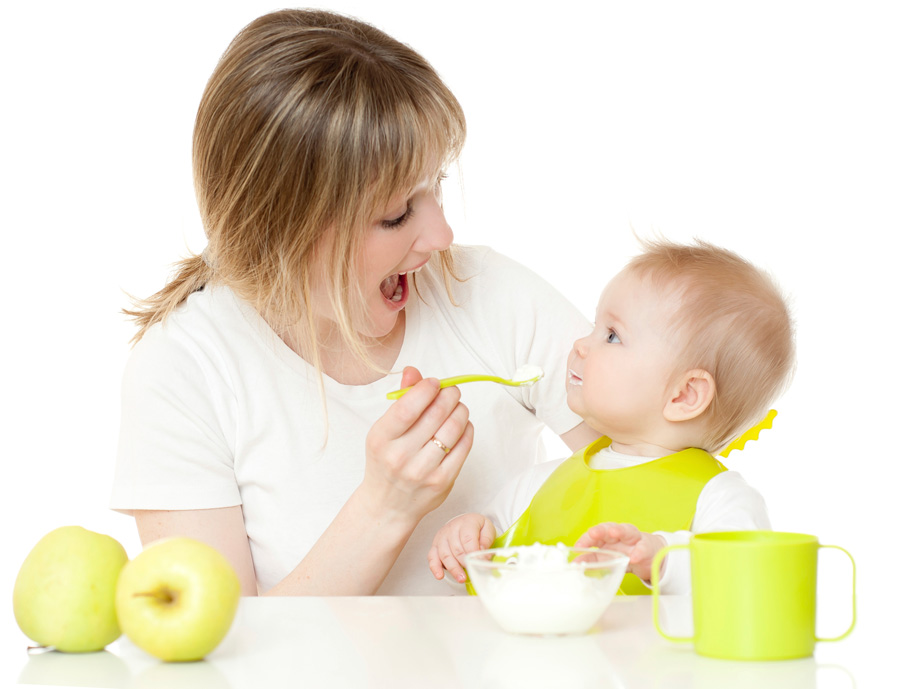 Here are some things you're sure to need, whether you're staying in the hospital for a few days or heading straight home:
Here are some things you're sure to need, whether you're staying in the hospital for a few days or heading straight home:
- nursing bras, nursing night bras and nursing tops;
- nursing nightgowns or pajamas;
- breastfeeding pillow;
- disposable or reusable bra pads;
- diapers;
- nipple remedy for dry skin and cracks;
- shapers* for flat or inverted nipples;
- book on breastfeeding;
- contacts of a lactation consultant, supervising doctor or hotline.
If you are having trouble breastfeeding, your lactation consultant or healthcare provider may recommend the following accessories:
- Nursing pads* if your baby cannot latch on or your nipples are sore. Do not use nursing pads for a long time. If you have any problems or pain, contact your lactation consultant or your healthcare provider.
- Breast pump** to relieve symptoms of breast swelling and/or stimulate milk production.

- Some mums like to use the cooling hydrogel pads* which provide relief in the first days after delivery, especially when milk begins to flow.
Nursing Tips
“Pillows help a lot to support your back, legs and arms. I also need bra pads in case of milk leaks, a nursing bra and loose tops for quick access to the breasts (I converted regular quality bras into nursing bras that better support the breasts). And we also used a sling all the time,” advises Zaria, a mother of two from South Africa.
“Hydrogel pads were my number one product. They were given to me in the first days of breastfeeding, so I never had sore or cracked nipples. I highly recommend hydrogel pads and buy them for anyone who plans to breastfeed,” shares her experience Camilla, a mother from Australia.
“You absolutely need someone to bring you something to drink. I kept forgetting to prepare myself a glass of water before feeding!” says Meg, mother of two from France.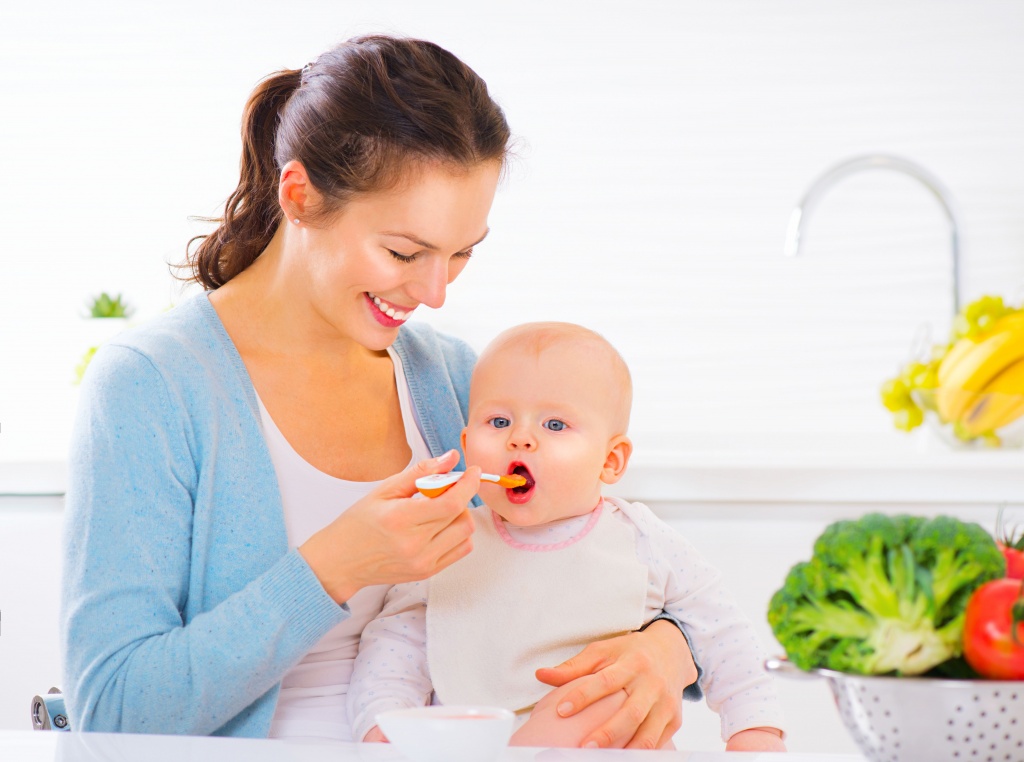
Thermos to drink hot while sitting in bed. Delicious food and light snacks. My mother-in-law cooked me amazing beef stew and delicious pancakes (I had to eat well!). A pillow to put the baby on because I didn't have the strength to hold it. A comfortable chair, a nightlight for feeding at night and a pillow to sit on (I had stitches - not a pleasant feeling!) ”advises Felicia, a mother of two from the UK.
“A caring spouse, girlfriend or grandmother to bring tea and anything else you might need while you sit and feed. And also an e-book to read with one hand!” says Julie, a mom from Spain.
Initial Breastfeeding Supplies
You and your baby will likely get comfortable with breastfeeding in the first couple of weeks. Feeding will occur frequently and take a long time. Here are some tools that will make your life easier and make breastfeeding more comfortable as your milk production begins to stabilize:
- feeding chair;
- breastfeeding mobile application;
- disposable or reusable bra pads;
- breast milk collection pads*;
- Large stock of healthy snacks, drinks and ways to pass the time.

Sooner or later you will get bored with the comfort of home and want to start walking with your baby. For tips on breastfeeding outside the home, see our article on breastfeeding in public.
Tips for breastfeeding moms
“For me, the most useful things were breastfeeding bras, disposable bra pads and large diapers to wipe up leaking milk, cover the baby or cover the chest. With cracked nipples, I saved myself with lanolin cream, and loose tops and cardigans made the feeding process easier, ”says Tatiana, mother of three children from Switzerland.
“I find the most useful accessory to be a good quality U-shaped breastfeeding pillow. I also had a rocking chair, in which, at a certain inclination, it was very convenient for me to feed the child. To relax, I always listened to music,” says Violeta, a mother from Romania.
“A sports water bottle that doesn't leak, even when open, so you can put it next to you on a sofa or bed. And also an application to track feedings and remind me which breast I fed last time, ”says Francesca, a mother from the UK.
And also an application to track feedings and remind me which breast I fed last time, ”says Francesca, a mother from the UK.
“Breast milk collection pads that are placed inside a bra to collect leaking milk. I had an overabundance of milk, that was the only way I was saved, ”says Lisa-Maria, a mother of two from Switzerland.
“I really liked the D-ring feeding cover to cover my baby and not distract him when feeding outside the house. The slightly rocking chair turned out to be a great alternative to outrageously expensive rocking chairs. Reusable bra pads, in my opinion, perfectly absorb milk, and diapers, as it turns out, can be used in a thousand ways. I regret that I didn’t buy the Medela Easy Expression bustier, it would have been much easier to pump with it!” says Camilla, a mother from Australia.
Breastfeeding accessories for pumping
During breastfeeding, you may need a breast pump to express your milk. The right type of breast pump depends on the individual case and how much milk you want to get. If you plan to express milk regularly, you may also need:
If you plan to express milk regularly, you may also need:
- steam sterilizer, cold water sterilizer, or microwave sterilization bags;
- breast milk storage bags;
- bustier top for hands-free pumping;
- cool bag.
Advice for breastfeeding moms
“At first, when I thought my breasts were about to explode, I used the Medela Electronic Breast Pump** just to get rid of excess milk without overstimulating my breasts. He made my life a lot easier,” says Tatiana, a mother of three from Switzerland.
“I used a Medela Freestyle Dual Electronic Breastpump** to increase my milk supply and fixed it with an Easy Expression bustier to keep my hands free. It turned out to be a wonderful decision,” says Amy, a mother from the UK.
Read instructions before use. Consult a specialist about possible contraindications.
* RU No. FZ 2010/07352 of 07/19/2010
** RU No. FZZ 2010/06525 of 03/17/2021
Breastfeeding for beginners | Philips Avent
search support iconSearch Keywords
Home ›› Beginner Breastfeeding
Home ›› Beginner Breastfeeding
↑ Top
Some of the most common questions about newborns have to do with feeding, which will take up a lot of time during the first few months of a baby's life. In this article, we will discuss all of its main aspects, from the basic principles of breastfeeding to the best tips for effective newborn feeding.
In this article, we will discuss all of its main aspects, from the basic principles of breastfeeding to the best tips for effective newborn feeding.
As always, if you have any questions or concerns, seek the opinion of another expert.
Basic principles of breastfeeding
Although every baby is different, newborns usually eat every two to three hours, for a total of 8 to 12 times a day. In the first one or two days after birth, babies usually drink 25-50 ml of milk per feeding. This volume will gradually increase to 50-75 ml when the baby is about two weeks old.
More information on how much a newborn should eat can be found here.
How long does one feeding last?
Again, every baby is different, so there is no set time frame for every newborn. But in general, breastfeeding a newborn takes five minutes to one hour. This time depends on the size, age of the baby and the frequency and duration of feeding the newborn.
How to start breastfeeding?
In the very first minutes of a child's life, the mother should put the baby on her chest and ensure body contact. This time is called the "golden hour": it is at this hour that a connection is established between mother and child and the newborn's natural instinct to seek the breast manifests itself. As soon as the child begins to show signs of hunger, you need to give him a breast.
Mothers who are just learning to breastfeed their newborns should remember that comfort is key. There is no better way to ensure breastfeeding success than by creating a comfortable and relaxing environment for the mother. For starters, mom can sit comfortably on the couch, on the bed, or in a chair with pillows to support her back while feeding. Breastfeeding moms can get creative with breastfeeding and choose specific lighting, soothing music, or anything else that helps them relax.
Bring your baby to your breast, not the other way around.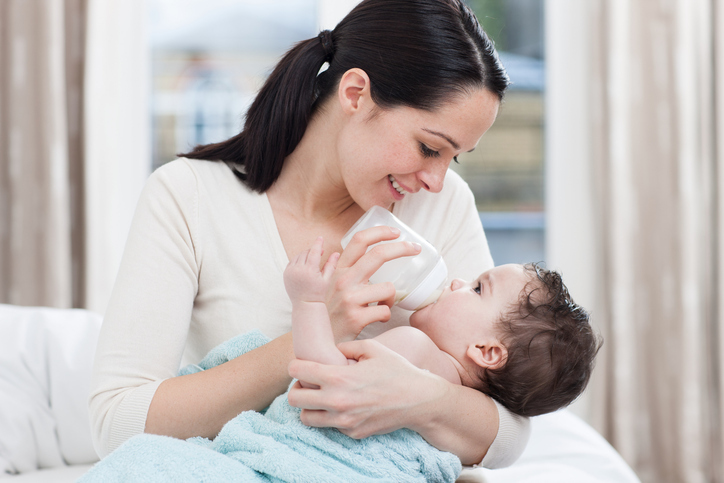 If you want to make breastfeeding a newborn easier, then do not lean towards the baby, but bring it to your chest. The baby's mouth should be opposite the nipple, the neck should be straight, and the shoulders and hips should be in line. Mom can also lightly touch her nipple to her baby's nose and mouth to encourage him to latch on.
If you want to make breastfeeding a newborn easier, then do not lean towards the baby, but bring it to your chest. The baby's mouth should be opposite the nipple, the neck should be straight, and the shoulders and hips should be in line. Mom can also lightly touch her nipple to her baby's nose and mouth to encourage him to latch on.
Support your chest. Holding the newborn with one hand, the mother can place the other hand directly under the breast to support it. When learning to breastfeed, some mothers prefer to leave one hand free; in this case, a rolled towel can be used.
Breastfeeding can be done in different positions; experiment with them to find the most comfortable for you and your baby. We list the most common breastfeeding techniques below:
- Cradle. In this position, the baby lies on the mother's hand from the side of the breast, which he sucks. The baby's head lies on the mother's elbow during feeding.
- Cross cradle.
 With a cross cradle, the mother holds the baby with the hand opposite to the mammary gland that the baby sucks. With the other hand, mom can support her breasts.
With a cross cradle, the mother holds the baby with the hand opposite to the mammary gland that the baby sucks. With the other hand, mom can support her breasts.
- Underhand or Football. In this position, the mother holds the child next to her, putting her back on her arm. With the other hand, she supports the baby's head, facing the mammary gland, with which she feeds the baby.
- Lying on the side. In this position, the mother lies on her side, and the child lies next to her, facing her chest. Mom can support the child under the back with the hand that is on top, or put a folded towel under the back of the child.
Newborn Breastfeeding Tips
After looking at breastfeeding techniques, here are a few tips for new mothers:
1. Make sure your baby latch on properly. A good grip is important for both mother and baby. With a good grip, the baby will suck out milk correctly, and the mother's nipples will not hurt. To achieve a good latch, the mother needs to find a position that makes it easier for the newborn to latch onto the breast, and to do this, she should experiment with different positions. If a mother is having difficulty feeding, she should contact a lactation consultant.
To achieve a good latch, the mother needs to find a position that makes it easier for the newborn to latch onto the breast, and to do this, she should experiment with different positions. If a mother is having difficulty feeding, she should contact a lactation consultant.
2. Maintain milk supply. Sometimes a nursing mother cannot be constantly with her child during feedings. In such cases, it is very important to maintain milk production. An excellent solution for maintaining milk production when mother and baby are not together is pumping milk.
Take a look at this double breast pump: it reduces pumping time and features a massage petal attachment to gently stimulate milk flow.
3. Breastfeeding everywhere. One of the many benefits of breast milk is that mom always has it with her. But some moms feel awkward at first when they have to breastfeed their baby in public. For such mothers, we recommend that you first practice breastfeeding your newborn in front of a mirror and choose clothes that allow you to cover your breasts during feeding.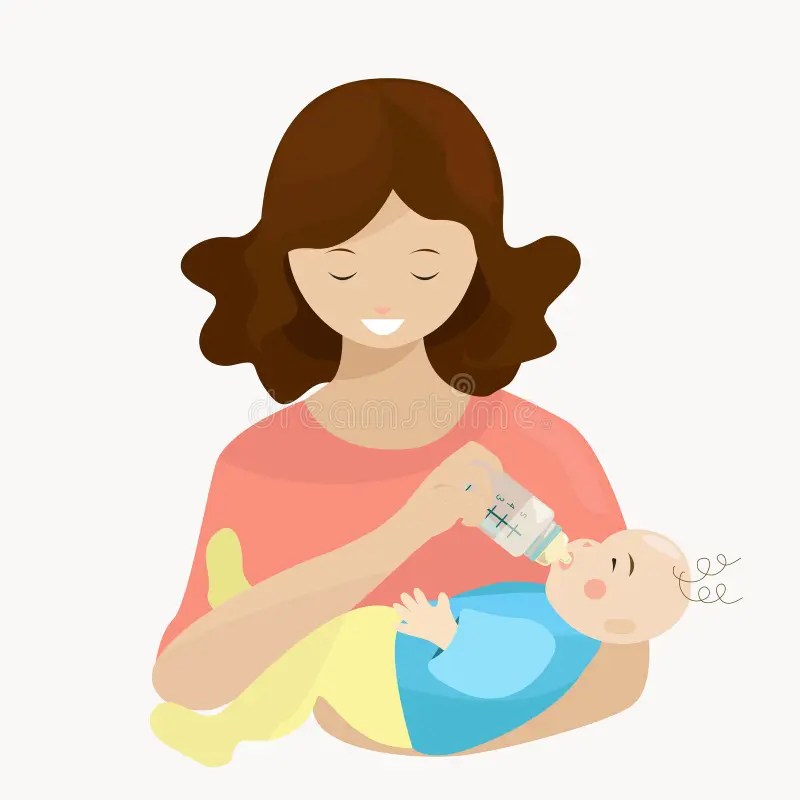 A shawl or scarf can help with this - with them, the mother will feel more comfortable when feeding the baby outside the home.
A shawl or scarf can help with this - with them, the mother will feel more comfortable when feeding the baby outside the home.
And to keep clothes dry and clean while breastfeeding, we recommend that mums use these disposable bra pads with a porous and breathable structure: they do not leak and let air through.
Be prepared for difficulties. It is important for moms not to panic or get upset when faced with a common breastfeeding problem, such as insufficient milk production, breast engorgement, clogged milk ducts, mastitis, or sore nipples. To feel calm and confident during all stages of breastfeeding a baby, mothers need a circle of support: family members, friends, and healthcare professionals. The main thing is to stay calm, but if a mother is concerned about any aspect of breast health, she should definitely see a doctor. Learn more about breastfeeding difficulties and how to overcome them.
Philips Avent Articles & Tips
Baby+ App
Download the app and track your baby's development and growth with trackers and keep those special moments forever.




